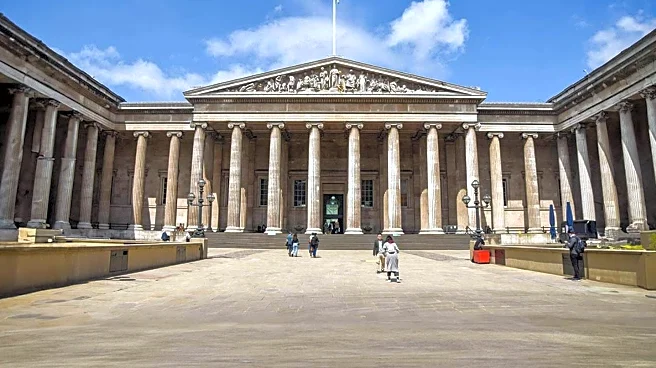What's Happening?
The British Museum has launched an initiative to bring artefacts directly into classrooms across England, allowing primary school students to engage with historical objects outside the traditional museum
setting. This program, part of the National Programmes partner organisation, involves schools selecting items from the museum's collection to study, such as a 3,500-year-old canopic jar. The initiative aims to enhance educational experiences by providing interactive learning opportunities, including tablet tours and virtual visits. The museum's head of learning and programmes, Shani Crawford, emphasizes the importance of aligning these activities with the UK national curriculum to ensure relevance and accessibility.
Why It's Important?
By taking artefacts into schools, the British Museum is democratizing access to cultural heritage and fostering a deeper understanding of history among young students. This approach not only enriches the educational experience but also addresses barriers that prevent some schools from visiting the museum. The initiative supports curriculum goals and encourages critical thinking, helping students connect with historical narratives in a tangible way. It also highlights the museum's commitment to inclusivity and diversity in its educational programming.
What's Next?
The British Museum plans to continue expanding its outreach efforts, with a focus on digital resources and virtual visits to reach schools unable to visit in person. The museum's masterplan, a cultural redevelopment project, will further enhance its educational offerings by integrating object-based learning into its programs. This development presents an opportunity to review and adapt the museum's learning strategies to better serve diverse audiences.
Beyond the Headlines
The initiative reflects broader trends in museum education, where institutions are increasingly leveraging technology and partnerships to engage with communities. It also raises questions about the role of museums in addressing historical narratives and promoting cultural understanding in a rapidly changing educational landscape.














